Wiwaxia corrugata
Wiwaxia is about 5 cm in maximam length. The body surface of Wiwaxia, excluding ventral, are covered with leaf-shaped sclerites, and there are arrays of sword-like shape spines which distal portions are bending slightly 1).
These sclerites are different shapes on dorsal, lateral, ventral margin etc. And spacing of the dorsal spines array is not always equal 1).
There are diffraction grating-like structures on the surface of sclerites and dorsal spines, suggesting that, like Marrella splendens, also the Cambrian species, they had reflected various colors depending on the depth of the water or the angle of the light. The dorsal spine had a defensive role, the structural coloration of scleries and spines also may had a same role 2).
With the exception of oral apparatus, there is no obvious trace of structure on the ventral surface, also no locomotive organs, no appendages, and no sense organs such as eyes or antennae 1).
Thinking from the morphology of Wiwaxia, it is difficult to imagine that they could swim even one inch. Wiwaxia may have crawled using the ventral muscular foot, just like Gastropoda (snails and slugs) or Polyplacophora (marine mulluscs, chitons), on the surface of sea-floor sediments, namely, may have been an epifauna. Wiwaxia may have been rasping algal and/or bacterial substrates, or feeding organic detritus.
Small size specimen has no spines, suggesting that smaller juveniles may have been an infauna, that is, they may have lived within the sediments of the sea-floor to escape from the predators 1).
References:
- Conway Morris S (1985) The Middle Cambrian Metazoan Wiwaxia corrugata (Matthew) from the Burgess Shale and Ogygopsis Shale, British Columbia,Canada. Phil. Trans. R. Soc. B 307:507 –582. (DOI:10.1098/rstb.1985.0005.)
- Parker AR (1998) Colour in Burgess Shale animals and the effect of light on evolution in the Cambrian. Proc. Biol. Sci. 265(1400): 967-972. (DOI:10.1098/rspb.1998.0385.)
- Smith MR (2012) Mouthparts of the Burgess Shale fossils Odontogriphus and Wiwaxia: implications for the ancestral molluscan radula. Proc.R.Soc.B. 279: 4287-4295. (DOI:10.1098/rspb.2012.1577.) Data from : Ontogeny, morphology and taxonomy of the soft-bodied Cambrian ‘mollusc’ Wiwaxia. DRYAD (DOI:10.5061/dryad.868sm.)

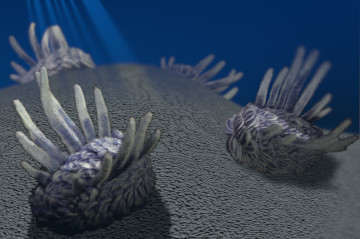
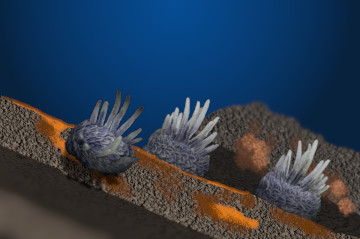
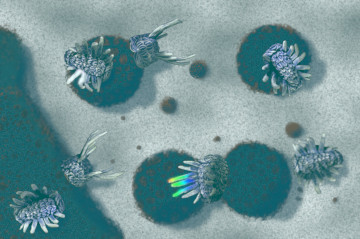
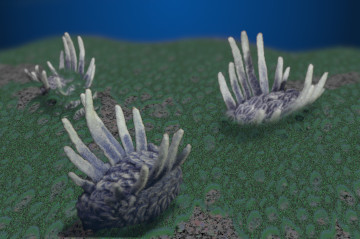
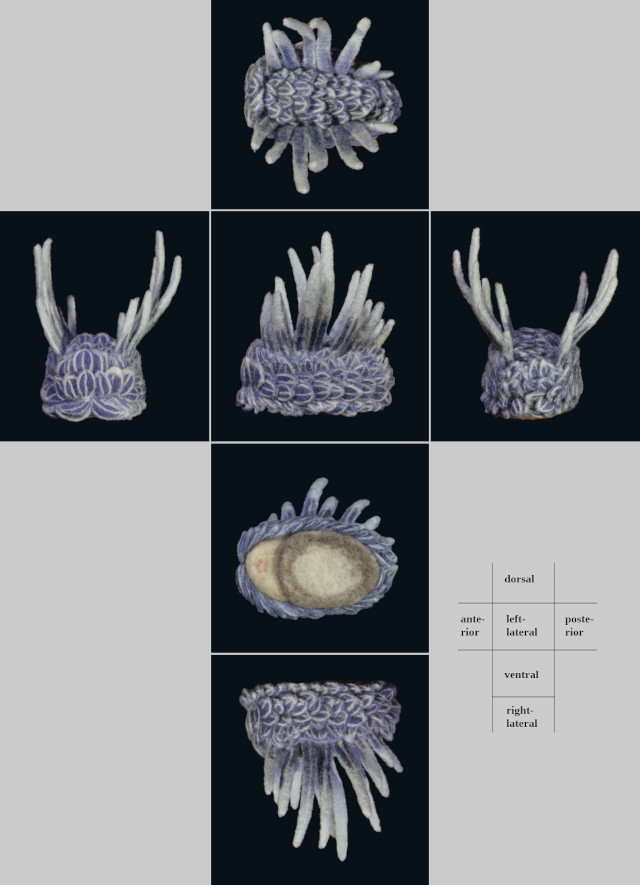
re-created in September - October 2020.